Table of Contents
ToggleThe 12 best ways to lose butt fat
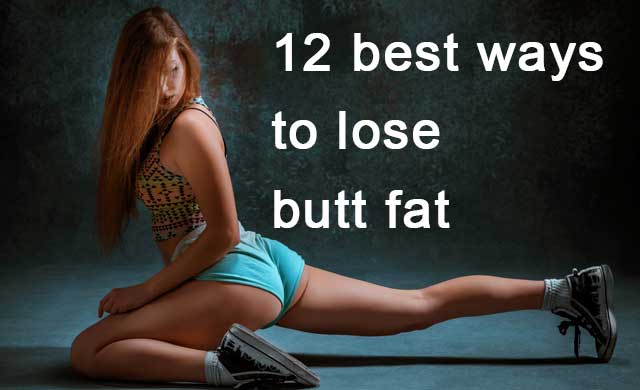
Reduce stress

Cortisol is a hormone released by the body in response to stress. Cortisol affects metabolism and increases sugar and other processed carbohydrate cravings. This leads to the accumulation of fat in the body.
People who are under a lot of stress are more likely to be tired, so ordering fast food instead of preparing a healthy meal at home may be tempting. It's also possible that they're not getting enough exercise. Weight gain can occur rapidly as a result of these behaviours.
The following suggestions will assist a person in lowering their stress levels:
- having enough exercise, even if it's just a daily stroll
- eating a healthy discrete
- practising mindfulness and meditation
- breathing deeply
- attempting progressive muscle relaxation
- spending time in nature
Build a daily night time routine to break the cycle of bad sleep. Every day, try to go to bed and wake up at the same time. Per night, you should get 7–9 hours of sleep
In conclusion, managing stress through a combination of regular exercise, a healthy diet, mindfulness practices, deep breathing, and relaxation techniques is essential for overall well-being and weight management. Additionally, establishing a consistent nightly routine can aid in improving sleep quality and further reduce stress levels. By adopting these strategies, individuals can work towards a healthier lifestyle and better stress management, ultimately supporting their efforts to maintain a healthy weight. Remember that small, consistent changes in your daily routine can lead to significant improvements in both your physical and mental health, paving the way for a happier and more balanced life.
The 12 best ways to lose butt fat. click for more topics Read More
Lunges

Lunges are another lower-body strength exercise that works the gluteus maximus and tones it. Sideways, forward, and transverse lunges are examples of variations.
Thighs and calves are also worked in the simple forward lunge. To do a lunge, follow these steps:
1. Position your feet hip-distance apart.
2. With the left knee, take a big step forward.
3. Lower the body slowly while bending both knees to 90 degrees. Enable neither the right nor the left knees to touch the ground or to move past the toes of the left foot.
4. Get back into a standing state. Rep a few times more.
Certainly, here's a comprehensive conclusion paragraph: In conclusion, it is imperative to recognize the significance of lunges as a versatile lower-body strength exercise. Lunges not only effectively target and tone the gluteus maximus but also engage a range of other muscle groups, including the thighs and calves. Whether you opt for forward, sideways, or transverse lunges, these variations offer a well-rounded lower-body workout that can contribute to increased muscle strength and endurance. By performing lunges with proper form, maintaining a hip-distance stance, and ensuring knees do not touch the ground or extend beyond the toes of the leading foot, individuals can harness the benefits of this exercise. Incorporating lunges into a regular fitness routine not only aids in achieving a more toned and sculpted lower body but also promotes overall physical fitness, making it a valuable addition to any workout regimen.
The 12 best ways to lose butt fat. click for more topics Read More
Running

Running is an outstanding full-body weight-loss workout. Running tones the leg and buttock muscles, resulting in a more developed appearance in the thighs and buttocks.
This physical exercise strengthens the lower body while also improving heart and lung function. It also doesn't need any special equipment aside from supportive shoes.
For weight loss, running is preferable to walking because it consumes more calories. According to a 2012 survey, people of average fitness burned 372.54 calories walking and 471.03 calories running over 1,600 metres.
However, even if a person is unable to start running, the study authors conclude that walking is a very good choice for burning calories and fat as compared to resting.
In conclusion, running stands out as an exceptional full-body workout for weight loss and overall fitness. It effectively tones leg and buttock muscles, resulting in enhanced thigh and buttock definition. Moreover, running contributes to lower-body strength and boosts cardiovascular health, requiring nothing more than supportive footwear. When it comes to weight loss, running surpasses walking in calorie expenditure, as demonstrated by research showing significantly higher calorie burn rates over a given distance. Nevertheless, for individuals who may not be ready for running, walking remains a commendable option for burning calories and reducing fat when compared to a sedentary lifestyle.
The 12 best ways to lose butt fat. click for more topics Read More
One-leg deadlift
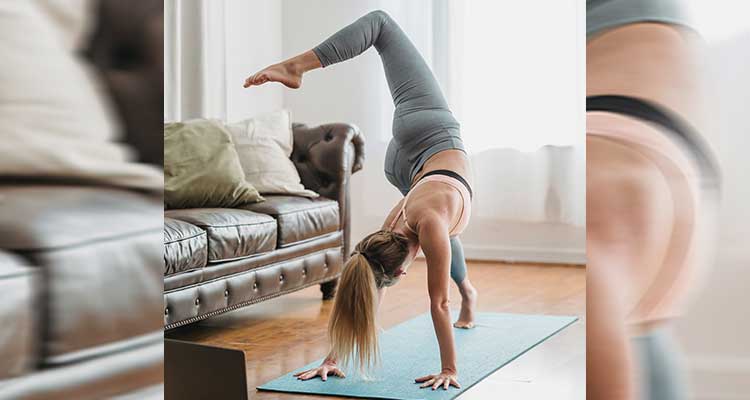
Deadlifts stabilise the lower body, improve balance, and work the abdominal and lower back muscles. The gluteus muscles are often activated by doing one-leg deadlifts.
To do a one-leg deadlift, follow these steps:
1. Place your hands by your sides and stand on one knee.
2. Extend the other leg behind you. Maintain a smooth back and back shoulders.
3. Lean forward from the hips until the hamstrings are stretched. Allowing the chest to fall below the hips is not a good idea.
4. Return to your original starting spot. After a few repetitions, swap sides.
If this is too much for you, place your non-supporting leg on the floor. Using hand-held weights to improve the strength of the workout.
In conclusion, one-leg deadlifts are a valuable exercise that enhances lower body stability, balance, and core strength. They particularly engage the gluteus muscles, contributing to better overall muscle development. To perform a one-leg deadlift effectively, one should maintain proper form by standing on one leg, extending the other behind with a straight back and shoulders. Leaning forward from the hips while keeping the chest above the hips is key. This exercise can be adapted to individual fitness levels by placing the non-supporting leg on the floor or incorporating hand-held weights to intensify the workout, making it a versatile addition to any fitness routine.
The 12 best ways to lose butt fat. click for more topics Read More
Step-climbing
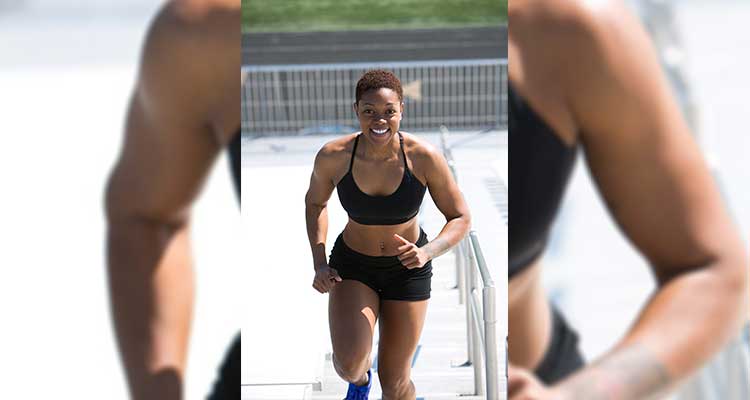
Climbing stairs is a simple way to tone your glutes while still keeping your heart and lungs in good shape. Climbing the stairs improves leg strength and sound. You can operate these muscles in a variety of ways:
- using stepping devices in a gym
- going up flights of stairs
- hiking uphill
Other health benefits can be gained from stair climbing. Climbing flights of stairs up to five times a day had a measurable effect on oxygen uptake and decreased low-density lipoprotein, or "negative," cholesterol, according to a small study conducted on 15 women in 2005.
In conclusion, step-climbing is a straightforward yet effective method for toning the glutes while simultaneously enhancing cardiovascular health and leg strength. This exercise can be performed using various approaches, such as gym step machines, ascending flights of stairs, or hiking uphill. Beyond its muscle-toning benefits, stair climbing has demonstrated positive health effects, including improved oxygen uptake and reduced low-density lipoprotein (LDL) cholesterol levels, as evidenced by a 2005 study involving 15 women. Incorporating stair climbing into your routine can be a convenient and beneficial way to promote overall fitness and well-being.
The 12 best ways to lose butt fat. click for more topics Read More
Side-lying hip abduction

The gluteus medius muscle can be strengthened by side-lying hip abduction exercises. To complete this activity, follow these steps:
1. Begin by lying on one side with one arm or hand supporting the head. Knees should be straight and feet should be close together.
2. Lift the top leg as high as you can without turning your pelvis back or forward.
3. Return to the starting position by slowly lowering the knee. Rep on either side several times.
Increase the strength of this exercise by using ankle weights
In conclusion, side-lying hip abduction exercises are an effective way to target and strengthen the gluteus medius muscle. This exercise involves lying on one side, lifting the top leg while maintaining proper pelvic alignment, and then slowly lowering it to the starting position. To intensify the workout, ankle weights can be incorporated. By regularly performing side-lying hip abduction exercises, individuals can work towards enhancing the strength and stability of their hip muscles, contributing to improved overall lower body strength and functional fitness.
The 12 best ways to lose butt fat. click for more topics Read More
Squats
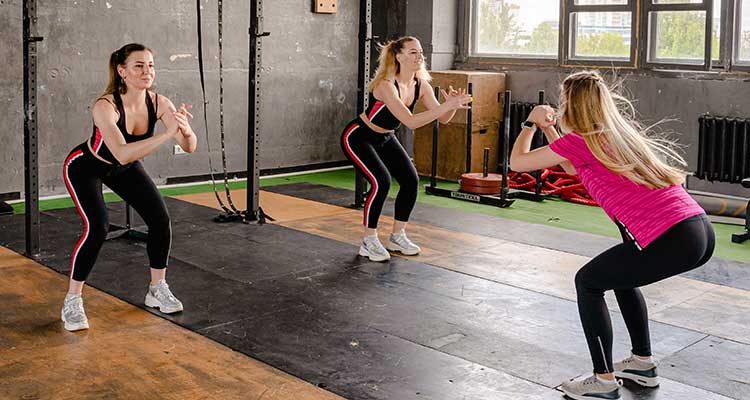
Squats are an important aspect of many workout routines. This is most likely due to their ability to simultaneously work many muscles in the buttocks, thighs, and abdomen.
The effects of various exercises on the gluteus maximus and gluteus medius were investigated in a 2009 study published in the Journal of Orthopaedic and Sports Physical Therapy.
Single-leg squats were found to be a good choice for triggering both the gluteus maximus and the gluteus medius, according to the researchers.
To do a single-leg squat, follow these steps:
1. Extend your arms out in front of you.
2. Stand on the left leg and stretch the right leg as far as possible in front of you.
3. Lower the ass as close to the floor as possible while holding the leg raised. The left knee should be in line with the left foot and the back should be straight.
4. Return to your original starting spot. Until moving to the right leg, repeat the process many times.
In conclusion, squats are a fundamental component of many workout routines due to their ability to engage multiple muscle groups simultaneously, including the buttocks, thighs, and abdomen. A 2009 study published in the Journal of Orthopaedic and Sports Physical Therapy investigated the impact of various exercises on the gluteus maximus and gluteus medius muscles. The researchers identified single-leg squats as an effective choice for activating both of these important muscles. To perform a single-leg squat, individuals can extend their arms, stand on one leg while extending the other, lower themselves as close to the floor as possible while keeping the raised leg elevated, and then return to the starting position. This exercise can be a valuable addition to a fitness routine aimed at strengthening the lower body and enhancing overall muscular balance.
The 12 best ways to lose butt fat. click for more topics Read More
Lateral band walk

A lateral band walk strengthens and stabilises the hips and knees while also working the gluteus medius muscle. This warm-up exercise is beneficial before running, jumping, and other sports.
To perform the lateral band walk, follow these steps:
1. Put a resistance band under the balls of your feet. Assist in keeping the band flat against the shoes.
2. Extend the legs out to shoulder width. Distribute your weight equally between your two feet.
3. Pinch the glutes and core muscles while bending the knees slightly to reach a semi-squat posture.
4. Take a slight step to the side with one foot, about 3 inches. Move the other foot in the same direction, around 3 inches this time.
5. Take 10 steps in this direction, then 10 steps in the opposite direction.
In conclusion, the lateral band walk is a valuable exercise for strengthening and stabilizing the hips and knees, with a particular focus on the gluteus medius muscle. It serves as an effective warm-up exercise, especially beneficial before engaging in activities like running and jumping or other sports that require lower body strength and stability. To perform the lateral band walk, individuals can place a resistance band under the balls of their feet, maintain a shoulder-width stance, engage their core and gluteal muscles, and take deliberate steps to the side in both directions. Incorporating this exercise into your routine can enhance hip and knee stability, contributing to improved athletic performance and injury prevention.
The 12 best ways to lose butt fat. click for more topics Read More
High-intensity interval training

People who are overworked and want to lose weight should try high-intensity interval training (HIIT). HIIT is the most influential fitness trend worldwide, according to a global survey of fitness trends for 2018.
For a brief period of time, high-intensity interval training (HIIT) entails placing all of the focus into one particular task. After that, there is a longer duration of slower movement. Since HIIT workouts are more intense than moderate-intensity exercises, they are usually shorter in duration.
Following a warm-up time, HIIT might include the following:
- 1 minute of treadmill running at 7 miles per hour (mph)
- running at 5 mph for 2 minutes
- repeating this pattern for about 15 minutes before cooling down
According to research from 2011Trusted Source, HIIT may be more effective than other forms of exercise at reducing body fat.
According to another research, HIIT is a successful strategy for controlling obesity due to its time-efficiency.
In conclusion, high-intensity interval training (HIIT) stands out as a highly effective fitness approach for individuals looking to manage their weight and improve their overall fitness. HIIT's popularity is well-supported by its efficiency in delivering results within a shorter timeframe compared to moderate-intensity exercises. HIIT involves brief bursts of intense effort followed by longer periods of slower activity and has been shown in research to be particularly effective in reducing body fat and aiding in weight management. Moreover, its time-efficiency makes it a valuable strategy for those with busy schedules seeking to combat obesity and enhance their fitness levels.
The 12 best ways to lose butt fat. click for more topics Read More
Work out regularly
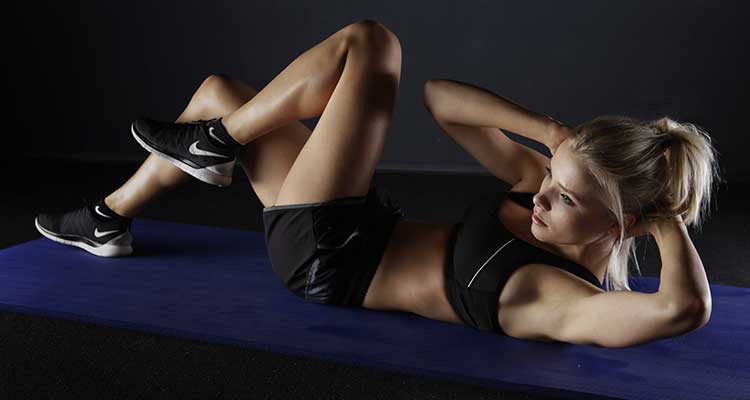
To see results, you must be consistent. Maintain a fitness regimen that incorporates both aerobic and strength training for the best overall results.
Adults should engage in at least 150 minutes of moderate-intensity aerobic exercise or 75 minutes of vigorous-intensity aerobic activity each week, according to the Physical Activity Guidelines Advisory Committee. Muscle-strengthening exercises should be done at least twice a week, according to the experts.
In conclusion, achieving fitness goals and maintaining a healthy lifestyle hinges on the importance of regular exercise. To reap the best overall results, it's crucial to establish a consistent workout routine that combines both aerobic and strength training exercises. Following the guidelines recommended by the Physical Activity Guidelines Advisory Committee, which suggests at least 150 minutes of moderate-intensity aerobic exercise or 75 minutes of vigorous-intensity aerobic activity per week, along with muscle-strengthening exercises performed at least twice a week, is essential for promoting physical health and well-being.
The 12 best ways to lose butt fat. click for more topics Read More
Get enough sleep

Sleep deprivation may have a detrimental impact on the body's metabolism and hormone levels. When you're tired, you're more likely to crave junk food and fast food.
Both effects, when combined, increase the likelihood of weight gain and make it more difficult to lose weight.
In conclusion, prioritizing adequate sleep is crucial for maintaining a healthy metabolism and hormone balance. Sleep deprivation can lead to cravings for unhealthy foods, potentially contributing to weight gain and hindering weight loss efforts. Therefore, ensuring you get enough restful sleep is a vital component of a healthy lifestyle and weight management.
The 12 best ways to lose butt fat. click for more topics Read More
Eat a balanced diet and practice portion control

A individual must consume less calories than the body burns in order to lose weight. A calorie deficiency is what this is known as. A calorie deficit of 3,500 calories is needed to lose one pound.
A easy way to do this is to practise portion control. To minimise calorie consumption and avoid weight gain, ResearchTrusted Source emphasises the value of portion control.
Filling up on fiber-rich foods like fruits, vegetables, beans, and lentils, as well as consuming lean protein sources like tuna, tofu, and legumes, are simple strategies for staying satisfied on a healthy diet.
• including olives, nuts, beans, and avocado in meals as a source of healthy fats
• staying away from processed foods and takeout meals
• avoiding sugary foods and sodas
• consuming a glass of water before meals
• chewing food slowly
• exchanging processed carbohydrates (white bread, white pasta, or white rice) for wholegrain versions (wholegrain bread, brown pasta, or brown rice)
In conclusion, achieving and maintaining a healthy weight requires a balanced diet and practicing portion control. Creating a calorie deficit by consuming fewer calories than the body burns is fundamental for weight loss. Portion control is a practical strategy to achieve this goal, emphasizing the importance of mindful eating to manage calorie intake effectively. Incorporating fiber-rich foods, lean protein sources, and healthy fats into one's diet can help promote satiety while avoiding processed foods, sugary items, and excessive carbohydrates. These dietary choices, along with habits like drinking water before meals and eating slowly, contribute to a balanced and sustainable approach to weight management. exercises butt fat
The 12 best ways to lose butt fat. click for more topics Read More
The 12 best ways to lose butt fat Read More
The 12 best ways to lose butt fat Read More
The 12 best ways to lose butt fat Read More
The 12 best ways to lose butt fat Read More
The 12 best ways to lose butt fat Read More
The 12 best ways to lose butt fat Read More
The 12 best ways to lose butt fat Read More
The 12 best ways to lose butt fat Read More
The 12 best ways to lose butt fat Read More
The 12 best ways to lose butt fat Read More
The 12 best ways to lose butt fat Read More
The 12 best ways to lose butt fat Read More
The 12 best ways to lose butt fat Read More
The 12 best ways to lose butt fat Read More
The 12 best ways to lose butt fat Read More
The 12 best ways to lose butt fat Read More
The 12 best ways to lose butt fat Read More
The 12 best ways to lose butt fat Read More
The 12 best ways to lose butt fat Read More
The 12 best ways to lose butt fat Read More
The 12 best ways to lose butt fat Read More
The 12 best ways to lose butt fat Read More
The 12 best ways to lose butt fat Read More
The 12 best ways to lose butt fat Read More
The 12 best ways to lose butt fat Read More
The 12 best ways to lose butt fat Read More